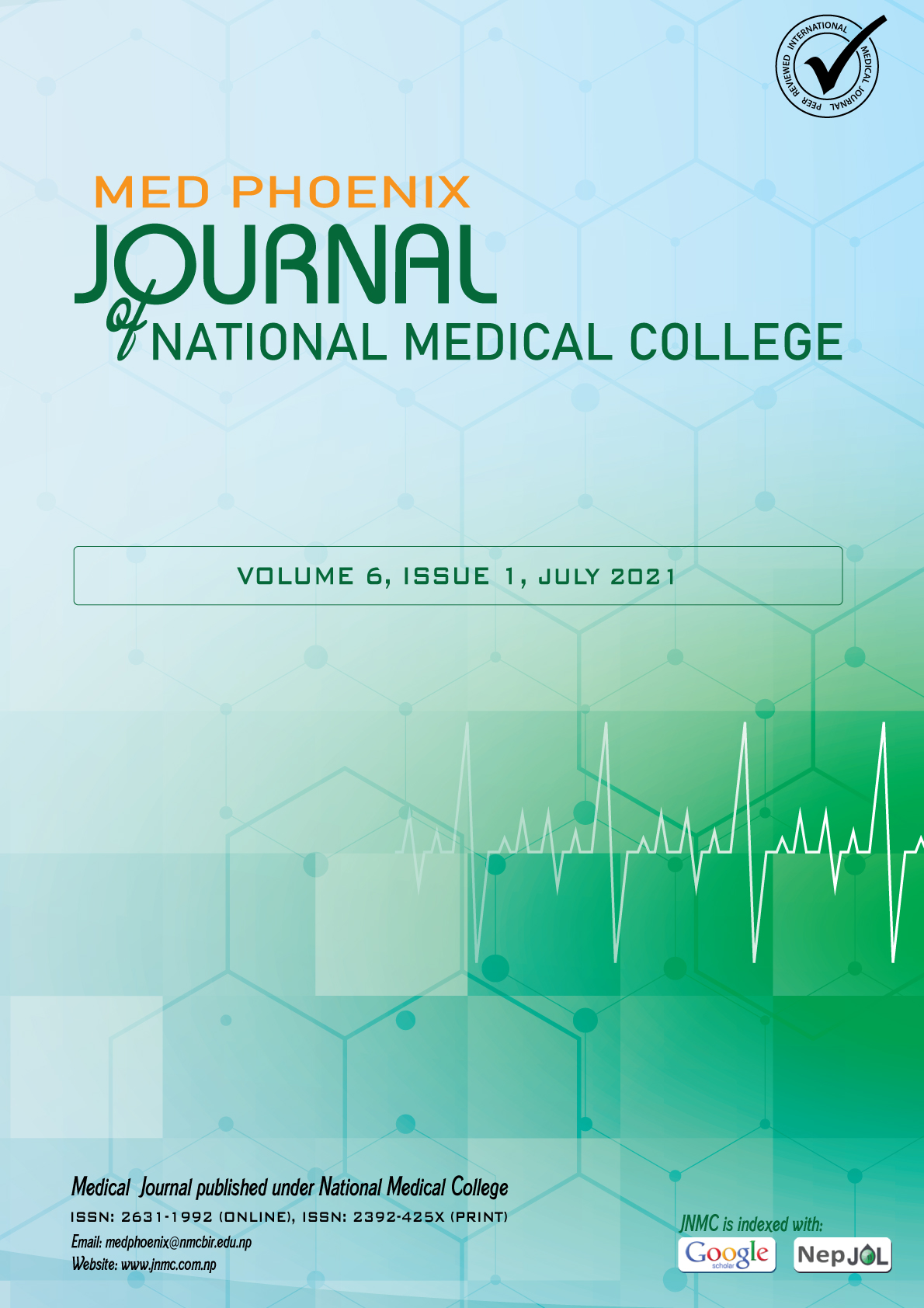A Comparison of Incidence of Post Dural Puncture Headache Using 25G Quincke and 25G Whitacre Needle in Obstetric Patients Undergoing Caesarean Section under Spinal Anesthesia
DOI:
https://doi.org/10.3126/medphoenix.v6i1.36732Keywords:
Cesarean section, Post-dural puncture headache, Quincke needle, Spinal anesthesia, Whitacre needleAbstract
Introduction: Spinal anesthesia has offered a new armamentarium for the anesthesiologists and has been widely used in the Cesarean section in the field of obstetrics, an alternative to general anesthesia. However, Post Dural Puncture Headache remains an inevitable complication of spinal anesthesia and can be minimized its incidence by reducing the size of the needle and changing the design of the needle tip. The objective of the study was to find the incidence of post-dural puncture headache undergoing subarachnoid block for CS using 25G Quincke and 25G Whitacre needles.
Materials and methods: This study was conducted from August 2020 to January 2021 enrolling 72 parturients and were allocated in two groups of 36 each. Group A and B parturients received spinal anesthesia via. 25G Quincke and 25G Whitacre in sitting position respectively. All the patients were evaluated based on incidence, onset, duration, and severity of headache postoperatively for 72 hours after the subarachnoid block.
Results: The incidence of post-dural puncture headache in the study was 7.2% in Group A and 3.15% in Group B which was statistically significant (P-value = 0.011), while there were no significant differences between these two groups in the onset, severity, and duration of post-dural puncture headache.
Conclusion: Despite no significant differences were found for the onset, severity, and duration of post-dural puncture headache, the use of 25G Whitacre is associated with a reduced incidence of post-dural puncture headache compare to 25G Quincke.
Downloads
Downloads
Published
How to Cite
Issue
Section
License
This license enables reusers to distribute, remix, adapt, and build upon the material in any medium or format, so long as attribution is given to the creator.
Copyright on any research article is transferred in full to MED PHOENIX upon publication. The copyright transfer includes the right to reproduce and distribute the article in any form of reproduction (printing, electronic media or any other form).




